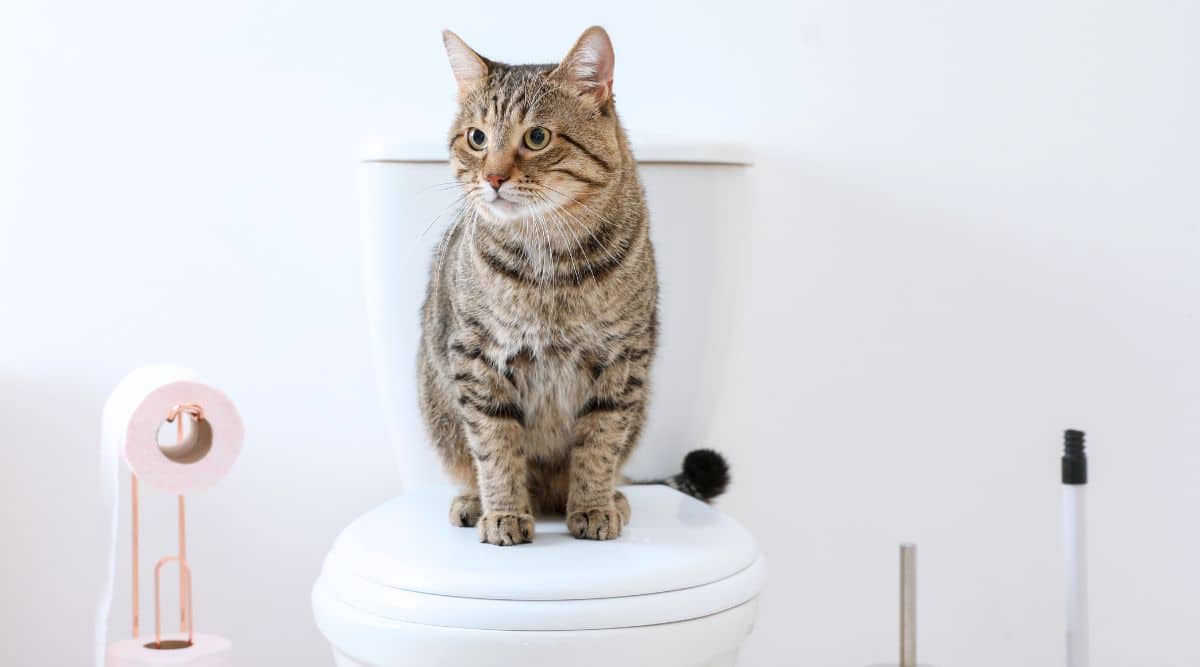Avoid Toilet Disasters: Don't Flush Cat Poop Down Your Toilet - Expert Guidance
Avoid Toilet Disasters: Don't Flush Cat Poop Down Your Toilet - Expert Guidance
Blog Article
What're your thoughts on Don’t flush cat feces down the toilet?

Intro
As pet cat proprietors, it's necessary to bear in mind how we take care of our feline good friends' waste. While it might appear hassle-free to purge cat poop down the commode, this method can have destructive consequences for both the environment and human health.
Alternatives to Flushing
Thankfully, there are safer and much more responsible means to dispose of cat poop. Take into consideration the complying with options:
1. Scoop and Dispose in Trash
The most usual technique of taking care of feline poop is to scoop it into an eco-friendly bag and throw it in the garbage. Make sure to use a specialized litter inside story and deal with the waste without delay.
2. Use Biodegradable Litter
Select biodegradable feline clutter made from materials such as corn or wheat. These trashes are eco-friendly and can be safely thrown away in the garbage.
3. Bury in the Yard
If you have a lawn, take into consideration burying feline waste in an assigned area away from veggie gardens and water sources. Make sure to dig deep adequate to prevent contamination of groundwater.
4. Install a Pet Waste Disposal System
Buy a family pet waste disposal system especially developed for pet cat waste. These systems utilize enzymes to break down the waste, decreasing odor and environmental influence.
Wellness Risks
Along with ecological worries, purging feline waste can also position wellness threats to people. Pet cat feces might have Toxoplasma gondii, a bloodsucker that can trigger toxoplasmosis-- a potentially serious disease, especially for pregnant females and people with weakened body immune systems.
Ecological Impact
Flushing pet cat poop presents unsafe microorganisms and bloodsuckers right into the water, posturing a considerable threat to water communities. These contaminants can adversely impact marine life and compromise water top quality.
Verdict
Responsible animal ownership prolongs past giving food and sanctuary-- it additionally entails correct waste management. By refraining from purging pet cat poop down the commode and going with different disposal approaches, we can lessen our ecological footprint and safeguard human health.
Why Can’t I Flush Cat Poop?
It Spreads a Parasite
Cats are frequently infected with a parasite called toxoplasma gondii. The parasite causes an infection called toxoplasmosis. It is usually harmless to cats. The parasite only uses cat poop as a host for its eggs. Otherwise, the cat’s immune system usually keeps the infection at low enough levels to maintain its own health. But it does not stop the develop of eggs. These eggs are tiny and surprisingly tough. They may survive for a year before they begin to grow. But that’s the problem.
Our wastewater system is not designed to deal with toxoplasmosis eggs. Instead, most eggs will flush from your toilet into sewers and wastewater management plants. After the sewage is treated for many other harmful things in it, it is typically released into local rivers, lakes, or oceans. Here, the toxoplasmosis eggs can find new hosts, including starfish, crabs, otters, and many other wildlife. For many, this is a significant risk to their health. Toxoplasmosis can also end up infecting water sources that are important for agriculture, which means our deer, pigs, and sheep can get infected too.
Is There Risk to Humans?
There can be a risk to human life from flushing cat poop down the toilet. If you do so, the parasites from your cat’s poop can end up in shellfish, game animals, or livestock. If this meat is then served raw or undercooked, the people who eat it can get sick.
In fact, according to the CDC, 40 million people in the United States are infected with toxoplasma gondii. They get it from exposure to infected seafood, or from some kind of cat poop contamination, like drinking from a stream that is contaminated or touching anything that has come into contact with cat poop. That includes just cleaning a cat litter box.
Most people who get infected with these parasites will not develop any symptoms. However, for pregnant women or for those with compromised immune systems, the parasite can cause severe health problems.
How to Handle Cat Poop
The best way to handle cat poop is actually to clean the box more often. The eggs that the parasite sheds will not become active until one to five days after the cat poops. That means that if you clean daily, you’re much less likely to come into direct contact with infectious eggs.
That said, always dispose of cat poop in the garbage and not down the toilet. Wash your hands before and after you clean the litter box, and bring the bag of poop right outside to your garbage bins.
https://trenchlesssolutionsusa.com/why-cant-i-flush-cat-poop/

Do you really like reading about How to Dispose of Cat Poop and Litter Without Plastic Bags? Place a short review down below. We would be pleased to find out your feelings about this blog. We hope that you come back again in the near future. For those who enjoyed our blog posting plz be sure to share it. I treasure reading our article about How to Dispose of Cat Poop and Litter Without Plastic Bags.
Visit Homepage Report this page